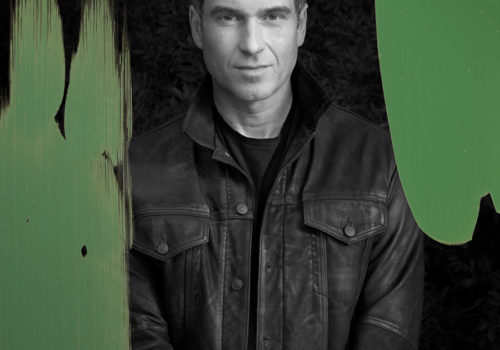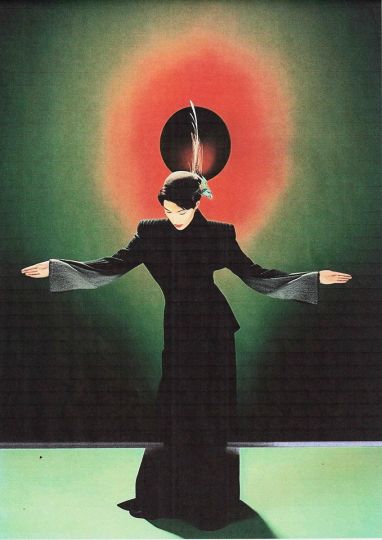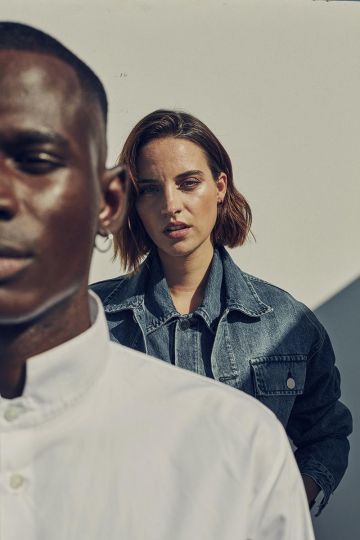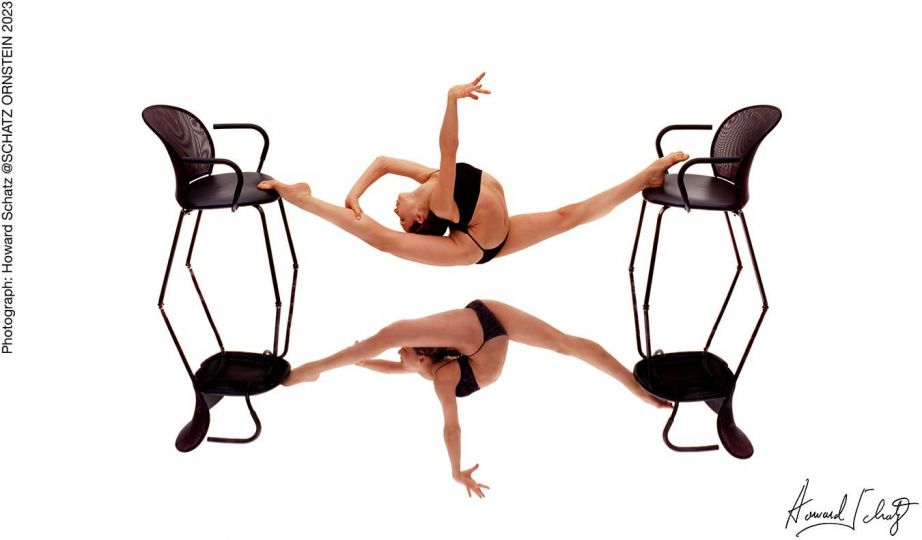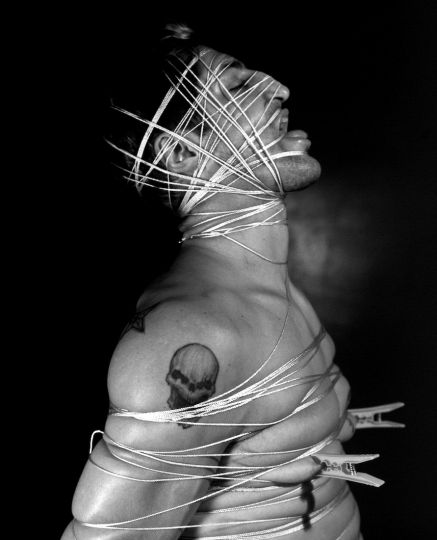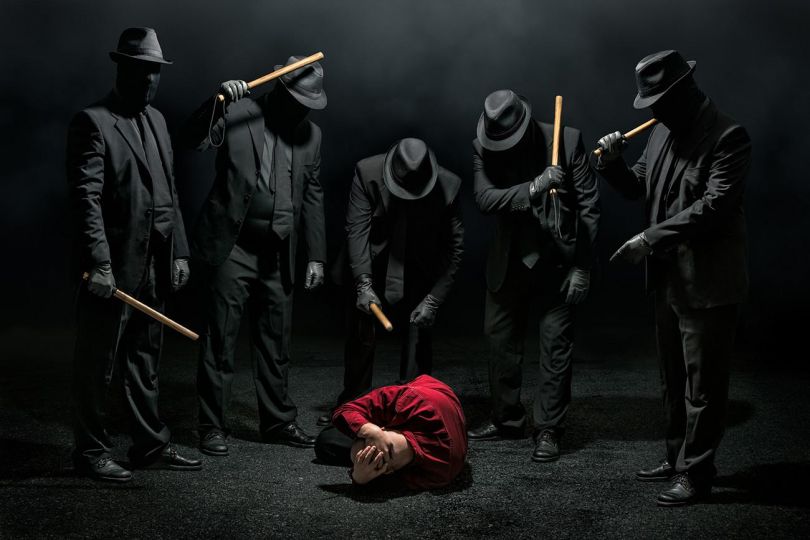Armin Zogbaum is famed for his minimalistic yet voluptuous still lifes for the who’s who of international luxury brands. From Louboutin to Navyboot, to Hachez and Chopard – Zogbaum’s creations are in high demand. But there’s much more to his work than just a marvelous display. The Swiss-born, Berlin-based photographer has moved through some exciting career stages before becoming what he is today. In view of his latest commercial campaigns, plus his other, “artistic side,” we reached out to trace his exciting biography and to find out what’s new.
Nadine Dinter: Throughout your outstanding career, you have gone through different stages. From working as a professional chef, to traveling the world as a stylist, to becoming a renowned editorial photographer. Please share some of your highlights with us.
Armin Zogbaum: My professional life was and is a very thrilling ride full of jumps into the unknown, because I love adventures! Every assignment, every editorial, every picture – for me, it’s always exciting. That’s why I don’t really use the word “work.” When the fascination fades, I immediately throw myself into the next big thing. That was also the case when I was young and crazy about cooking.
How did you go from cooking, to being a stylist, and then to photography?
AZ: All my metamorphoses have always been fluid. After a couple of years as a chef, I became head of kitchen, and then I thought: from now on, life will be on repeat. So I quit – and from that point on I wrote cookbooks and editorials as a food journalist. During this time, I came into regular contact with professional photography and was soon styling all the food shots myself. Countless magazine articles and 15 cookbooks later, I became obsessed with interior design and went on to make a name for myself by designing and styling countless interior editorials and advertising campaigns. With that skill, I traveled the world – and discovered by chance the magic of large format cameras during an assignment in Bali. Infused with enthusiasm, I decided to focus professionally on photography. I bought a SINAR – the “Rolls-Royce” of all large-format cameras. I was in heaven. There was an unbelievable amount of things to learn, which is very hard to imagine today, in the age of the iPhone, and I absolutely loved it.
Being a chef laid the foundation for everything that was to come: Discipline, creativity, and sensuality – there is probably no tougher school than Michelin-star gastronomy. By the way, the artist Julian Schnabel, whose paintings I absolutely adore, was a very good chef himself, before pursuing a career as a painter.
Styling has always been an important ingredient of your photography. How much time do you devote to this yourself, and how often do you work with other stylists in order to fully focus on your photography?
AZ: At the beginning of my photographic career, I always did the concepts and styling of the pictures myself. But at some point, I started to miss the creative exchange. Today I love to develop new ideas through collaboration. It leads to an inspiring sense of unity, which I love. As a photographer, my work in the studio with my team is comparable to a musician with his band. Photography is a mixture of vision, feeling, and technique – just like in music. As the “lead singer” of my “band,” my name is subsequently also on the “cover,” or rather under the photo, although many have contributed to the project.
Looking at your portfolio, we marvel at breathtaking jewelry from Chopard, Van Cleef & Arpels, mouthwatering chocolate compositions for Lindt and Barry Callebaut, and “to die for” luxury accessories by Louis Vuitton, Alexander McQueen, and Bottega Veneta. What has been your favorite campaign so far?
AZ: I absolutely can’t tell you that. My favorite project is always the one I’m currently engaged in. I’m not interested in the past. A photograph is not just a frozen moment, but also tied to the time of its creation. Like fashion and music, photography’s appeal reflects the zeitgeist and is constantly changing. What inspires or irritates today may no longer evoke emotion tomorrow. In the best case, applied photography becomes records of the time or milestones of artistic perspectives. With digital photography and the rise of social media, the lifespan of pictures has been shortened dramatically. Never before in the history of mankind have images been consumed faster and in greater masses than today.
My fondest memories are the personal encounters I make on my travels, and the often adventurous stories associated with them. What I love just as much as photography are the journeys that come with the assignments. By traveling, I don’t mean visiting a country as an observer and reading up on the tourist attractions in a guidebook. Creating something new, together with a team, in a foreign cultural environment – that’s what interests and excites me.
A French art director posted a picture on Instagram where the whole team, and we were quite a wild bunch, jumped into the pool after the “wrap” – the end of our shoot. The pool was located in a very chic Parisian villa that we had booked as a location for a very conservative client and where, ironically, only porn is normally being filmed. It was a blast – with lots of champagne.
My first encounter with Christian Louboutin was also quite funny. I was on my way to a meeting for his shoe label, but couldn’t find the address. By chance I spotted Christian on the street, so went up and spoke to him, laughing, and he showed me the way. After that, he gave me complete creative freedom for the project.
I’ll also never forget my shoots in Moscow, back when Russia was still considered the Wild East. I was paid in cash as there was no way to transfer the money to my bank. My agent gave me lots of tips in case I got arrested for currency smuggling. But she said that if I followed her advice, it wouldn’t be a problem at all.
How do you prepare yourself for a still life composition, as opposed to a shoot with a live model?
AZ: Due to my professional history, my focus for a long time was staging design objects as still lives. I subsequently photographed people in the same way, for example for Italian Vogue: not as portraits, but as part of a precisely arranged setting, in a particular pose that I defined. This style was shaped, on the one hand, by my approach and sketches, but also by my preferred equipment at the time: the handiness of the camera influences the spontaneity of the pictures.
Today, I love photographing people with a 35mm camera. Especially the speed of the autofocus allows me to take a completely different, much more impulsive approach with more dynamic image compositions. So today I photograph people very differently and I also prepare differently, allowing much more room for spontaneous moments.
Either way, I always try to breathe some magic into my pictures. That special little something, which is so difficult to capture and barely predictable, which enables a photo to stand out in an ocean of images.
Your latest photographs have been mixed with aspects of painting, turning them into more than “just a photograph.” Where did this inspiration and idea come from?
AZ: Where the inspirations come from is hard to say. I’m like a vacuum cleaner that sucks up everything and miraculously something completely different comes out later. Creative ideas can’t be planned, but are usually the result of persistent thinking, sometimes even persistent drawing. The basic condition, however, is always an inspirational, observant way of life with plenty of different experiences. Often ideas come to me when I’m half asleep, so my iPhone is always next to me where I can quickly write them down. Painting and photography have forever been intertwined and often elements of one have been incorporated into the other. The upside about applied photography is that there’s no need for an intellectual underpinning, as in art. The pictures simply must capture the spirit of our times.
For almost five years now, you have also been creating art photographs under the name Armin Dietrich. How did this come about and how do the “two Armins” get along?
AZ: It started when I developed the urge to do something new, apart from applied photography. The urge to explore photography in combination with painting. I didn’t imagine myself in a darkroom, but in a bright, white studio. I initially drew inspiration from the likes of Julian Schnabel, Andy Warhol, and Robert Rauschenberg.
In order to be able to embark on this creative challenge undisturbed, I decided to use my middle name as my surname: 100 percent me and at the same time a new, blank page without any history.
My first works used transparent, fiberglass canvases coated with epoxy resins. Photo digital printing and collages of colored foils create the sensation of giant, handmade slides. It feels like alchemy. The works were presented on wooden stretcher frames. I combined painting with photography in a haptic way; it was something that had never been seen before.
Today I deal in a more transparent way with my two creative directions, with the two Armins. They inspire each other. The separation has worked for me and gives me the freedom I need to evolve in both cases.
As Armin Dietrich, you have already created and exhibited three exciting series. They merge photography and painting, and include translucent elements, which together result in a toxic mix of abstractionism, figurative objects, and contemporary art. What’s the next series about?
AZ: Apart from the particular theme of my works, transparency and reflection played a major role in my previous series. This time, I’m placing reflection in the spotlight. In addition, the new works will no longer be transparent. The viewer, who has always been a part of my works, will get more attention. The clear reflection in the works allows the viewer to become an integral part of the artwork, which at the same time, confirms the viewer’s existence. The reflections let viewers experience their deepest, inner being, and immerse themselves in the world I have created. The overriding theme of the upcoming series is what nature means to us, how we behave in it, what we do with it, and what it does to us. And, of course, the works are also about the parts of nature that will soon no longer exist.
I captured the images for this new series in Greenland. It was an incredible, solitary journey with long hikes and nighttime boat rides amidst the icebergs in the sea. During the stillness, interrupted by thunderstorm-like sounds of collapsing icebergs, dripping water, and whales coming up to the surface for a breath of air, many photographs were taken; some of those form the basis of my new works.
For 2021, you are planning to open a superb solo show at your new gallery representation in Singapore. Tell us a little bit more about it.
AZ: I must confess that Covid-19 has meant that it’s been taking a while to get it off the ground, and the exhibition dates have not been set yet. But we are in constant dialogue about it.
What is your advice for other artists who want to work in both commercial and artistic photography?
AZ: In retrospect, I think it was especially important to me personally to create a new space for myself that was detached from my commercial work: a new mental space, as well as a new physical location. Initially I used my atelier (which I deliberately don’t call “studio”) exclusively for my art projects. Today I am more relaxed about it all. Ultimately, it’s not only about self-expression, but also about business. And in both cases, I agree with Andy Warhol: “Being good in business is the most fascinating kind of art. Making money is art and working is art and good business is the best art.”
More on Armin Zogbaum at: https://arminzogbaum.com/
Follow him on Instagram @arminzogbaum & @armindietrich

